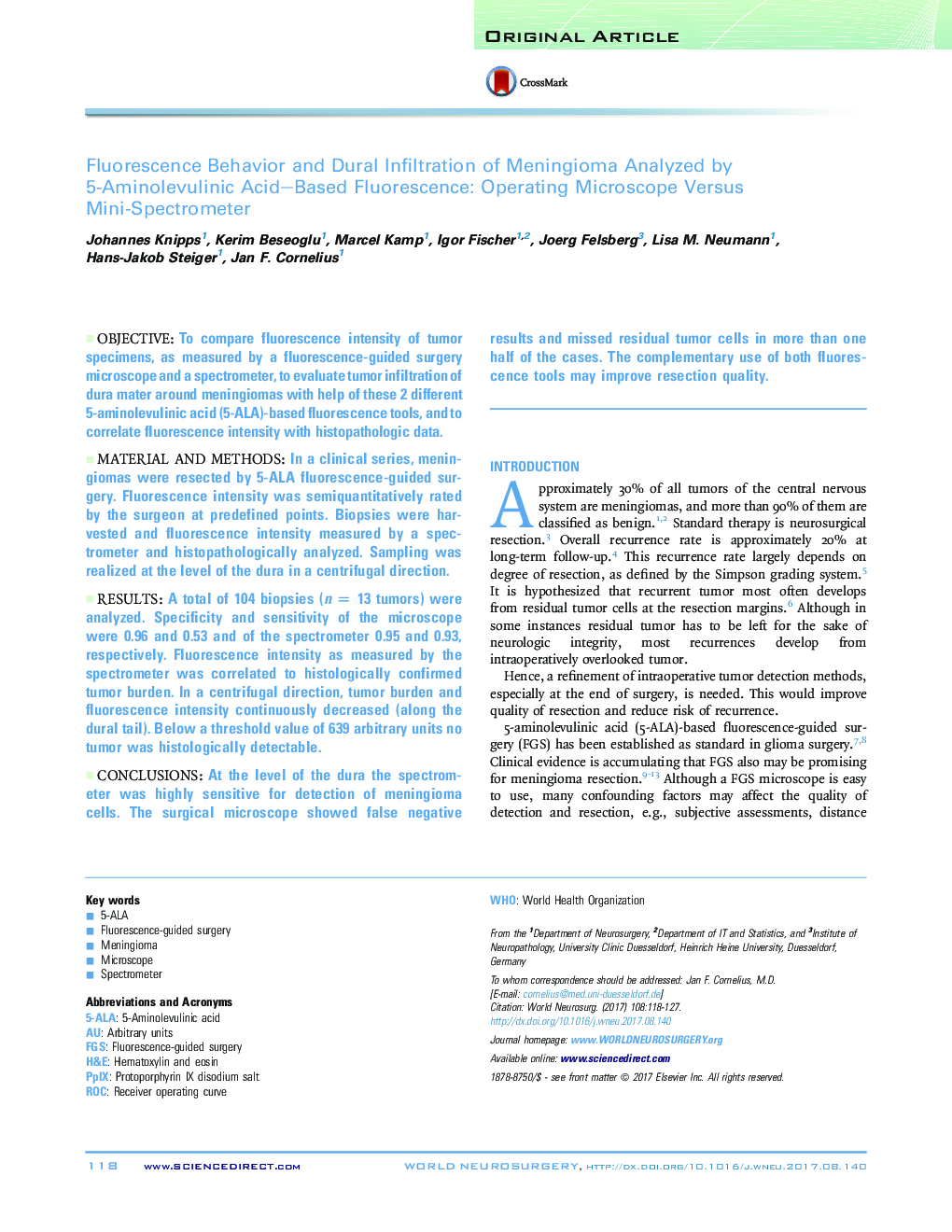| کد مقاله | کد نشریه | سال انتشار | مقاله انگلیسی | نسخه تمام متن |
|---|---|---|---|---|
| 5633764 | 1581447 | 2017 | 10 صفحه PDF | دانلود رایگان |
ObjectiveTo compare fluorescence intensity of tumor specimens, as measured by a fluorescence-guided surgery microscope and a spectrometer, to evaluate tumor infiltration of dura mater around meningiomas with help of these 2 different 5-aminolevulinic acid (5-ALA)-based fluorescence tools, and to correlate fluorescence intensity with histopathologic data.Material and MethodsIn a clinical series, meningiomas were resected by 5-ALA fluorescence-guided surgery. Fluorescence intensity was semiquantitatively rated by the surgeon at predefined points. Biopsies were harvested and fluorescence intensity measured by a spectrometer and histopathologically analyzed. Sampling was realized at the level of the dura in a centrifugal direction.ResultsA total of 104 biopsies (n = 13 tumors) were analyzed. Specificity and sensitivity of the microscope were 0.96 and 0.53 and of the spectrometer 0.95 and 0.93, respectively. Fluorescence intensity as measured by the spectrometer was correlated to histologically confirmed tumor burden. In a centrifugal direction, tumor burden and fluorescence intensity continuously decreased (along the dural tail). Below a threshold value of 639 arbitrary units no tumor was histologically detectable.ConclusionsAt the level of the dura the spectrometer was highly sensitive for detection of meningioma cells. The surgical microscope showed false negative results and missed residual tumor cells in more than one half of the cases. The complementary use of both fluorescence tools may improve resection quality.
Journal: World Neurosurgery - Volume 108, December 2017, Pages 118-127
